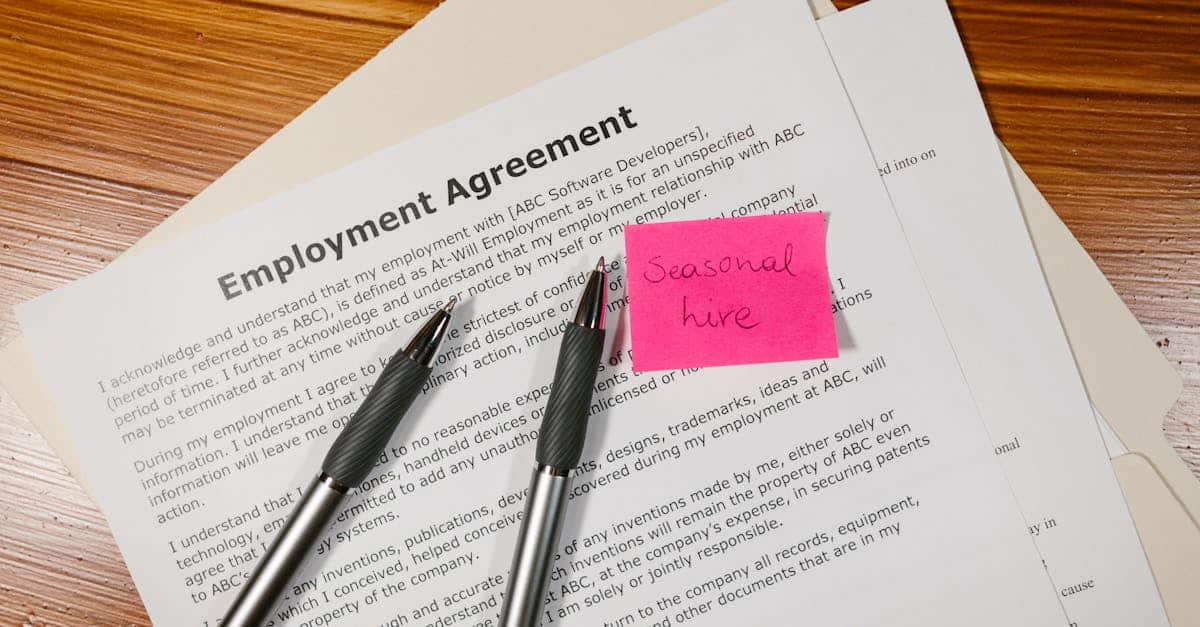
Introduction
Cut the paperwork bottleneck. Manual offer letters, lost contracts, and mismatched systems still stall hiring and sales — and in 2025 those delays are costly as teams scale and compliance gets stricter. Choosing the right e-signature integration and connector can shave days off hiring cycles and speed contract closes by combining strong security, deep APIs, and seamless UI embedding.
Document automation (templating, merge fields, and webhook-driven post‑sign actions) is the multiplier: it turns ad hoc signing into repeatable workflows that keep your CRM and HRIS in sync. This article walks through how to evaluate connectors (security, API depth, UI options, and compliance), which patterns work best for Salesforce/HubSpot and Workday/BambooHR/Greenhouse, practical automation playbooks, performance and cost considerations, and ready-to-use Formtify templates to accelerate rollout.
How to evaluate e‑signature connectors: security, API depth, UI embedding, and compliance features
When choosing an e-signature connector, prioritize security and compliance first. Look for strong authentication options (SAML/SSO, OAuth2, 2FA), end-to-end encryption, tamper‑evident audit trails, and certificates of completion. Confirm vendor compliance with ESIGN, UETA, eIDAS (if you operate in the EU), SOC 2, and any industry-specific standards your organization needs.
API depth and developer capabilities
Evaluate the electronic signature API and signing API features. A mature API supports:
- RESTful endpoints and official SDKs for your language/platform.
- Document templating, field/recipient merging, and conditional routing.
- Bulk send, composite templates, and transaction/batch operations for high volumes.
- Webhook events for post-sign workflows and reliable retry semantics.
UI embedding and user experience
Decide how closely you need to embed signing in your product. Options include:
- Embedded signing (iFrame or JS SDK) to keep users in-app.
- Redirect/hosted signing for faster integration and vendor-managed UI.
- Customizable branding, localization, and accessibility support.
Also assess the vendor’s esign workflow integration features — things like approval chains, reminders, and conditional document flows — because they reduce custom engineering.
Checklist
- Strong auth, encryption, and audit logs.
- Robust electronic signature API and SDKs.
- Flexible UI embedding (embedded vs hosted).
- Compliance certifications and clear legal guidance.
- Support for contract lifecycle automation and integrations with your core systems.
Connector scenarios by system: Salesforce and HubSpot for sales; Workday, BambooHR and Greenhouse for hiring
Different systems require different connector expectations. Map the connector capabilities to the system role — CRM for sales and ATS/HRIS for hiring — and prioritize features accordingly.
Sales: Salesforce and HubSpot
For sales teams, the key is tight CRM integration. The connector should:
- Auto-create and attach signed contracts to Account/Opportunity records.
- Update opportunity stages when documents are signed.
- Support e-signature integration Salesforce and e-signature integration HubSpot with native objects, triggers, and workflows.
- Expose signing events to sales dashboards and reporting.
Hiring: Workday, BambooHR, and Greenhouse
For HR/TA, focus on secure document generation and auditability. Use connectors that:
- Auto-generate offer letters and onboarding packets from employee records in Workday or BambooHR.
- Trigger NDAs and candidate agreements directly from Greenhouse candidate stages.
- Keep signed documents in the employee file and capture metadata (signed date, signer identity).
- Support compliance with employment laws and data residency rules across jurisdictions.
These scenarios benefit from an e-signature integration api that supports templating, role-based recipients, and event-driven updates so your CRM and HRIS stay in sync without manual work.
Integration patterns: embedded signing, redirect flows, API first automation, and webhook‑based post‑sign actions
Choose an integration pattern based on user experience goals, security posture, and engineering resources. Each pattern has trade-offs in speed, control, and maintenance.
Embedded signing
Embedded signing keeps users inside your application using a JS SDK or iFrame. It delivers the smoothest UX and is ideal when you own the signing flow and want to minimize context switching.
Redirect/hosted signing
Redirect flows send users to the vendor’s hosted signing page. This is faster to implement and often simpler for cross-border compliance, but you trade off some UI control and branding.
API‑first automation
API-first is for programmatic use cases and contract lifecycle automation: generate docs, prefill fields, route for e-signature, and store results. This pattern scales well for high-volume or custom workflows.
Webhook‑based post‑sign actions
Use webhooks to react to signing events: update CRMs, notify teams, archive to storage, or trigger onboarding. Ensure your system supports idempotency, retry logic, and secure webhook verification to prevent spoofing.
Mix and match patterns: for example, use API-first generation + embedded signing for in-app UX, and webhook callbacks to update systems and kick off downstream automation.
Automation playbooks: auto‑generate offer letters from HRIS, trigger NDAs from applicant tracking systems, and push signed contracts to CRM records
Below are practical playbooks you can implement to turn e-signature integration into operational efficiency.
Playbook: Auto‑generate offer letters from HRIS
- Trigger: Candidate moves to “Offer” stage in Workday/BambooHR.
- Action: HRIS calls signing API to populate a job offer template (merge fields: salary, start date, manager).
- Delivery: Send for signature via embedded signing or hosted link.
- Post‑sign: Webhook stores the signed PDF in the employee record and notifies HR and Hiring Manager.
Playbook: Trigger NDAs from applicant tracking
- Trigger: Candidate applies or reaches a specific Greenhouse stage.
- Action: Create NDA from template and email invite to candidate (or sign in-app for recruiters).
- Post‑sign: Attach signed NDA to candidate profile and mark compliance metadata.
Playbook: Push signed contracts to CRM records
- Trigger: Opportunity accepted or contract executed in e-signature platform.
- Action: Webhook sends signed doc and metadata to Salesforce/HubSpot via connector.
- Post‑sign: Update opportunity stage, set renewal reminders, and store the PDF in the document repository.
Use templates like an offer letter or NDA to standardize content and speed deployment. For example, you can quickly wire a job offer template: https://formtify.app/set/job-offer-letter-74g61 and an NDA template for applicant flows: https://formtify.app/set/non-disclosure-agreementemployee-b9s6h.
Also consider using independent contractor templates when engaging non‑employees: https://formtify.app/set/independent-contractor-agreement-5jhqd.
Performance and reliability criteria: SLA, retry logic, and handling high‑volume bursts
Performance and reliability are essential, especially for mission‑critical signing flows. Make SLAs and operational behavior part of your evaluation.
SLA and availability
Require clear SLAs for uptime, incident response, and scheduled maintenance windows. For high‑availability needs, aim for 99.9%+ uptime and explicit remedies or credits for downtime.
Rate limits, throughput, and bursts
Understand API rate limits and concurrency caps. If you have seasonal or campaign bursts (e.g., hiring ramp or sales quarter close), confirm the vendor supports bulk operations and can increase throughput.
Retry logic and idempotency
Design your integration to use exponential backoff and idempotent operations. Ensure the signing provider exposes idempotency keys and reliable webhook retry policies so you can recover from transient failures without creating duplicate records.
Monitoring and observability
- Track metrics: success rates, latency, webhook failures, and queue lengths.
- Implement alerting on error thresholds and delivery delays.
- Have fallbacks: queued processing, temporary storage, and human review paths for critical documents.
Test your architecture under realistic load to validate performance and recovery behavior before going live.
Cost and vendor selection tips: per‑envelope costs, bulk discounts, and contract terms to watch
Cost structures vary widely among e-signature vendors. Know the pricing levers and what to negotiate.
Common pricing models
- Per‑envelope/per‑signature — you pay per transaction.
- Per‑user or per‑seat — flat fee for licensed users.
- API/integration fees — charges for API calls or higher throughput tiers.
- Storage and retrieval — fees for document storage or exporting historical documents.
What to negotiate
- Bulk discounts for anticipated volume and ramp plans.
- Rate‑limit increases or guaranteed throughput during peak periods.
- Data residency, export rights, and access to raw event logs for audit purposes.
- Support levels, SLA credits, and escalation pathways.
- Termination and data return clauses — ensure you can export all documents and metadata on contract end.
Watch contract terms for hidden costs (international signing, advanced authentication, or premium templates). Model your expected monthly envelopes and API calls to compare total cost of ownership, not just the headline price.
Recommended Formtify templates to pair with CRM/HRIS connectors for faster rollout
To accelerate rollout, pair your connector work with ready templates that are designed for HR and sales workflows. These templates reduce legal review cycles and speed integration tests.
Key Formtify templates
- Job offer letter — use this with Workday, BambooHR, or Greenhouse to auto‑generate offers: https://formtify.app/set/job-offer-letter-74g61.
- Independent contractor agreement — ideal for onboarding contractors via HRIS and capturing e‑signatures: https://formtify.app/set/independent-contractor-agreement-5jhqd.
- Non‑disclosure agreement (employee) — trigger from ATS or onboarding flows and attach to candidate/employee records: https://formtify.app/set/non-disclosure-agreementemployee-b9s6h.
Rollout checklist
- Map templates to system triggers (ATS stage, HRIS offer event, CRM opportunity).
- Validate merge fields and test embedded signing flows in a sandbox.
- Confirm audit trail capture and storage location for signed PDFs.
- Train HR and Sales users on the new esign workflow integration and recovery steps.
Using these templates with your e-signature integration tools and signing API will shorten implementation time and provide consistent, compliant documents across hiring and sales processes.
Summary
Choose a connector that balances strong security, deep APIs, and the right UX pattern for your teams — whether that’s embedded signing for a smooth in‑app flow or API‑first automation for high‑volume pipelines. Document automation turns ad hoc paperwork into repeatable workflows that give HR and legal teams consistent templates, tamper‑evident audit trails, and fewer manual handoffs so offers and contracts close faster. Picking the right e-signature integration and pairing it with tested templates lets you reduce compliance risk and shorten time‑to‑hire and time‑to‑revenue. Get started with ready templates and connector guidance at https://formtify.app.
FAQs
What is e-signature integration?
E‑signature integration connects your signing provider to systems like CRMs and HRIS so documents, signatures, and metadata flow automatically into the right records. It typically includes API calls, webhook events, and templating features that eliminate manual uploads and ensure audit trails are retained.
How do I integrate e-signature into my application?
Start by choosing a provider with a mature REST API and SDKs for your tech stack, then design templates and auth (SSO/OAuth) for secure access. Implement webhooks for post‑sign actions, test flows in a sandbox, and add idempotency and retry logic to handle transient failures.
Are e-signatures legally binding?
Yes — in most jurisdictions electronic signatures are legally binding when they meet standards for signer identity, intent, and record retention (e.g., ESIGN/UETA in the U.S. and eIDAS in the EU). Be sure the provider preserves tamper‑evident audit trails and supports any industry‑specific or regional requirements relevant to your documents.
Can I integrate e-signature with Salesforce?
Yes. Many signing platforms offer native Salesforce connectors or APIs that let you attach signed PDFs to Account/Opportunity records, trigger signing from workflows, and surface signing status in reports and dashboards. Validate the connector supports the objects, triggers, and bulk operations your sales process requires before production roll‑out.
How much does e-signature integration cost?
Costs vary by pricing model — common levers are per‑envelope fees, per‑user seats, API/integration tiers, and storage charges. Estimate your monthly envelope volume, expected API calls, and required SLAs, and negotiate bulk discounts, rate‑limit increases, and data export terms to understand total cost of ownership.





